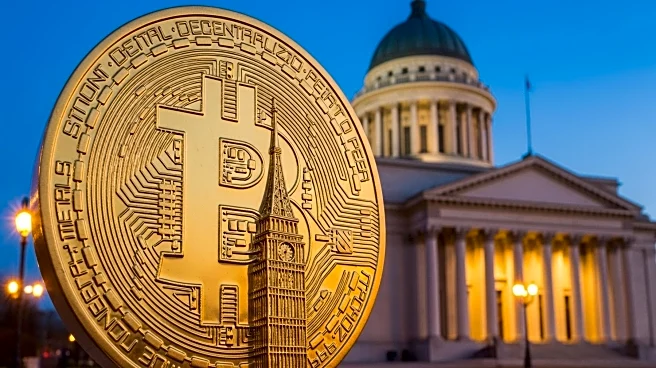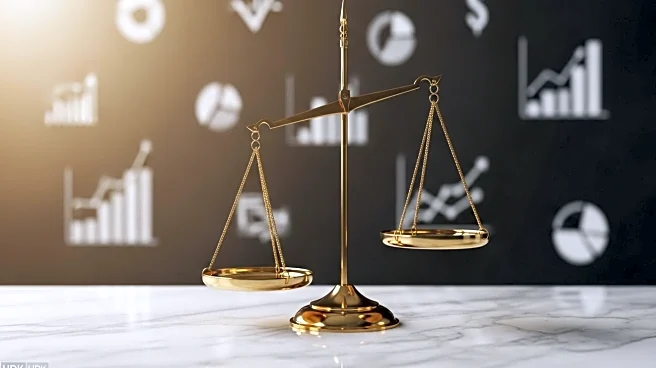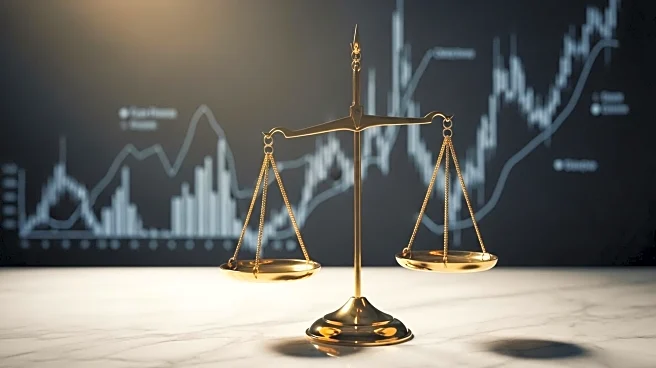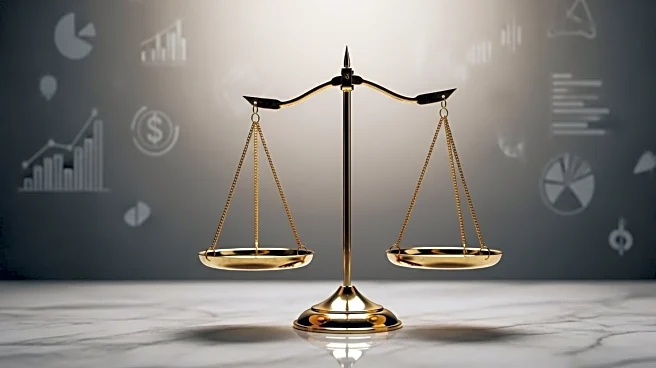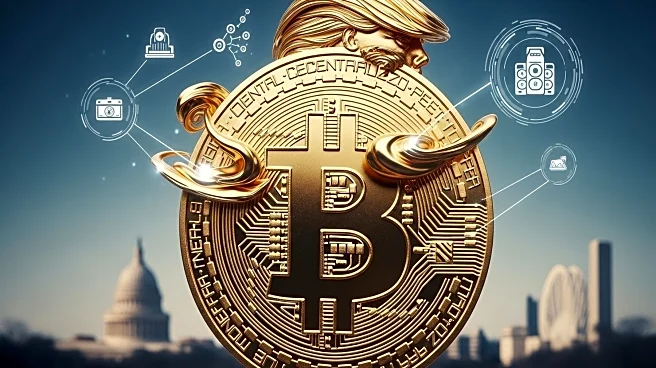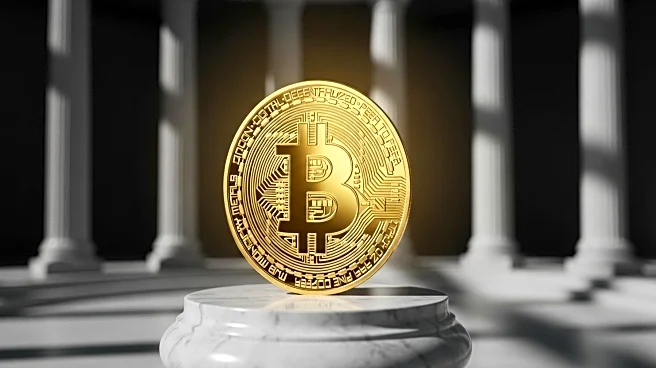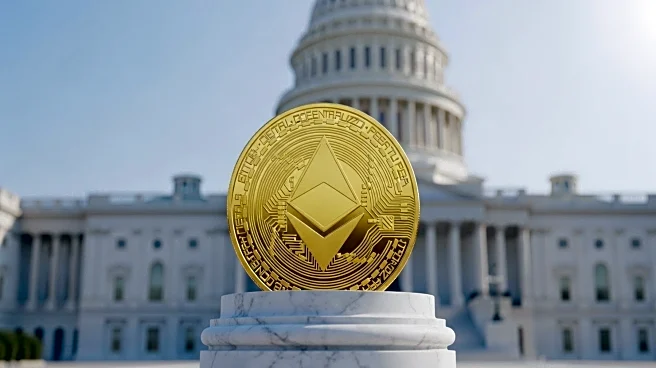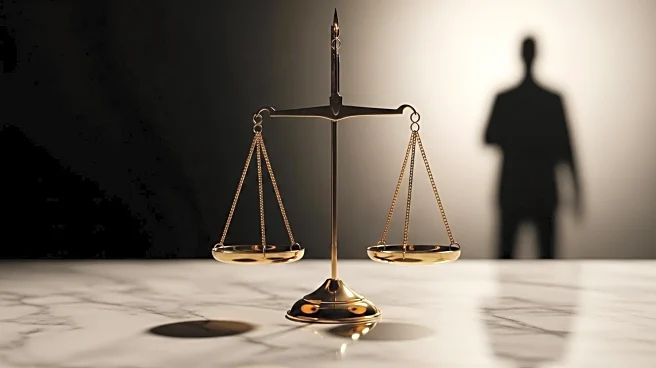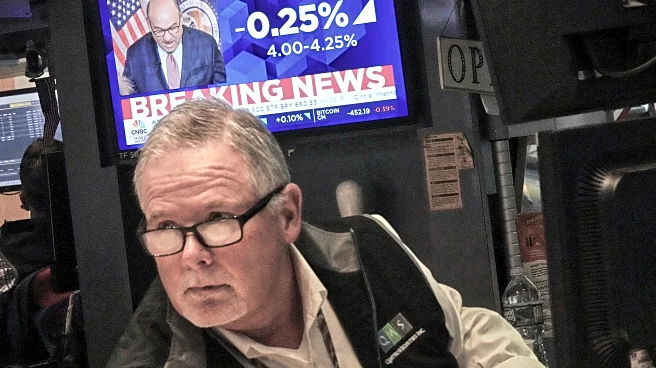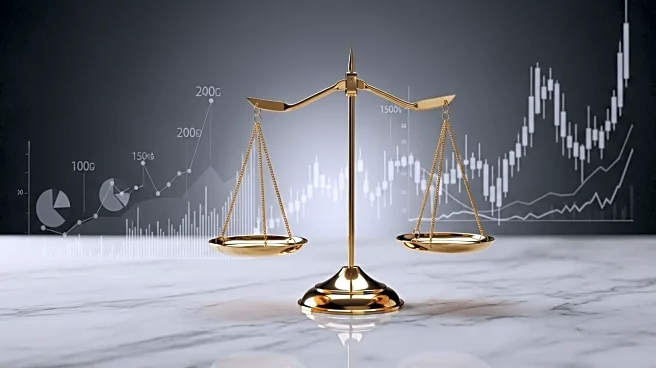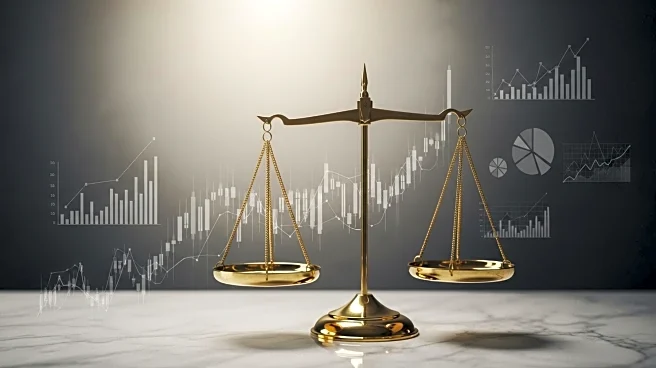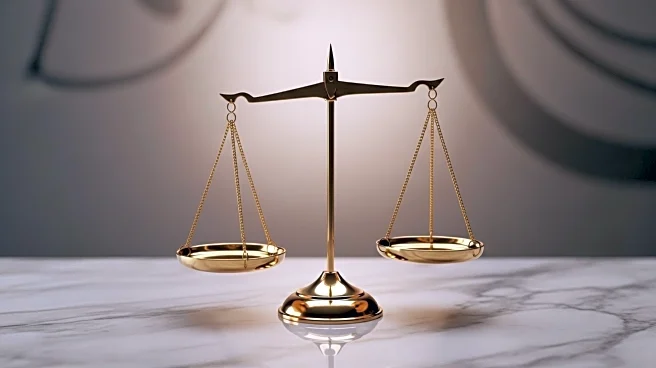What is the story about?
What's Happening?
A 12-foot golden statue of President Trump holding a Bitcoin was unveiled outside the U.S. Capitol coinciding with the Federal Reserve's decision to cut interest rates by a quarter-point. The statue, funded by creators of a Solana meme coin, aims to provoke discussion on government currency and digital financial innovation. The installation has sparked mixed reactions, with supporters viewing it as a tribute to Trump's influence on Bitcoin adoption, while critics dismiss it as a spectacle lacking substance. The statue was temporarily displayed, drawing attention to the intersection of modern politics and financial innovation.
Why It's Important?
The unveiling of the statue highlights the growing influence of cryptocurrency in political discourse and the symbolic association of President Trump with Bitcoin. This event underscores the tension between political spectacle and substantive policy discussions, particularly in the context of monetary policy. The timing of the statue's unveiling with the Fed's rate cut raises concerns about political influence over economic decisions, potentially affecting the independence of the Federal Reserve and confidence in U.S. debt. The statue serves as a reminder of the complex relationship between politics and financial innovation.
What's Next?
The statue's removal does not end the conversation it sparked. Stakeholders in the financial and political sectors may continue to debate the implications of such symbolic gestures on public perception and policy. Economists warn that political pressure on monetary policy could lead to inflation and undermine institutional credibility. As cryptocurrency becomes more intertwined with political narratives, further discussions on regulatory frameworks and the role of digital currencies in the economy are likely to emerge.
Beyond the Headlines
The statue's presence and subsequent removal reflect broader cultural dynamics, where meme culture and political iconography intersect. Critics argue that such stunts prioritize visual impact over meaningful policy dialogue, potentially trivializing complex issues. The event may influence public memory more than actual regulatory changes, highlighting the role of media and symbolism in shaping political narratives.
AI Generated Content
Do you find this article useful?
